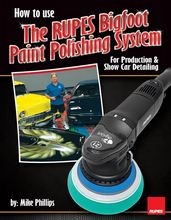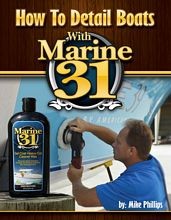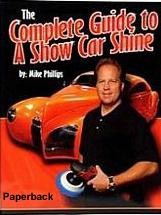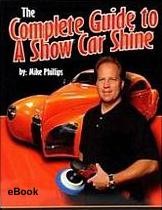Why it`s important to clean your pads often...
ANYTIME you`re abrading the surface whether you`re using an aggressive cutting compound of an ultra fine polish, you have two things building up on the face of your buffing pad...
- Spent product
- Removed paint
You need to remove both of these substances from the face of the pad and the panel you`re working on before you apply fresh product. If you don`t,
- Adding fresh product to spent product and removed paint adulterates the fresh product, it also dilutes it.
- Buffing with a dirty pad will be more difficult.
- The product will cake-up on the face of the pad.
- The product will become gummy on the paint and hard to wipe off.
How to clean your pads and other options to make buffing clean again...
- You can scrub the face of the pad with a nylon brush like a pad conditioning brush or even a nylon toothbrush
- If using a Dual Action Polisher or a Rotary Buffer you can clean your pad on the fly with a terry cloth towel
- You can wash your pads in a bucket of water
- You can wash your pads in a sink under running water
- You can wash your pads in a pad washer
- You can switch to a clean, dry pad
- You can switch to a brand new pad
I just buffed out half the hood on an oxidized 1959 Cadillac and used the technique along with a nylon brush and it works adequately enough to allow me to work clean and get back to work quickly.
That`s the whole idea behind cleaning your pad on the fly... you can remove a majority of the spent product and removed paint and then get back to running the buffer... buffing out an entire car already takes a l-o-n-g time... stopping to do some kind of pad cleaning procedure that isn`t quick and easy keeps you from buffing on the paint.
Fast methods include,
- Pad Washers
- Cleaning your pad on the fly with a terry cloth towel
- Using a nylon pad conditioning brush
- Using a Spur if you`re using a wool pad on a rotary buffer
Slow methods, (they might work well but they take you away from buffing on the car)
- You can wash your pads in a bucket of water
- You can wash your pads in a sink under running water

Results 1 to 1 of 1
-
04-15-2011, 03:13 PM #1
Why it`s important to clean your pads often...
Mike Phillips
Host - Competition Ready on Velocity Channel
Director of Training Autogeek & Marine 31
Competition Ready Facebook Page
Mike Phillips Facebook Page
Twitter
Instagram
Click on a book to get your own copy.







Thread Information
Users Browsing this Thread
There are currently 1 users browsing this thread. (0 members and 1 guests)
Similar Threads
-
Clean Pads
By BobbyG in forum Auto Detailing 101Replies: 1Last Post: 01-04-2013, 06:54 PM -
How best to clean pads?
By imported_Indy YZF in forum Car Detailing Product DiscussionReplies: 3Last Post: 06-05-2011, 07:28 PM -
How do you clean your pads?
By John M. in forum Hot TubReplies: 19Last Post: 09-09-2009, 11:03 AM -
Can`t get my wax pads clean
By pingable in forum Car DetailingReplies: 17Last Post: 04-04-2005, 01:12 PM -
how important is it to center pads
By jaybs02 in forum Auto Detailing 101Replies: 6Last Post: 08-22-2004, 07:49 PM






 Reply With Quote
Reply With Quote
Bookmarks